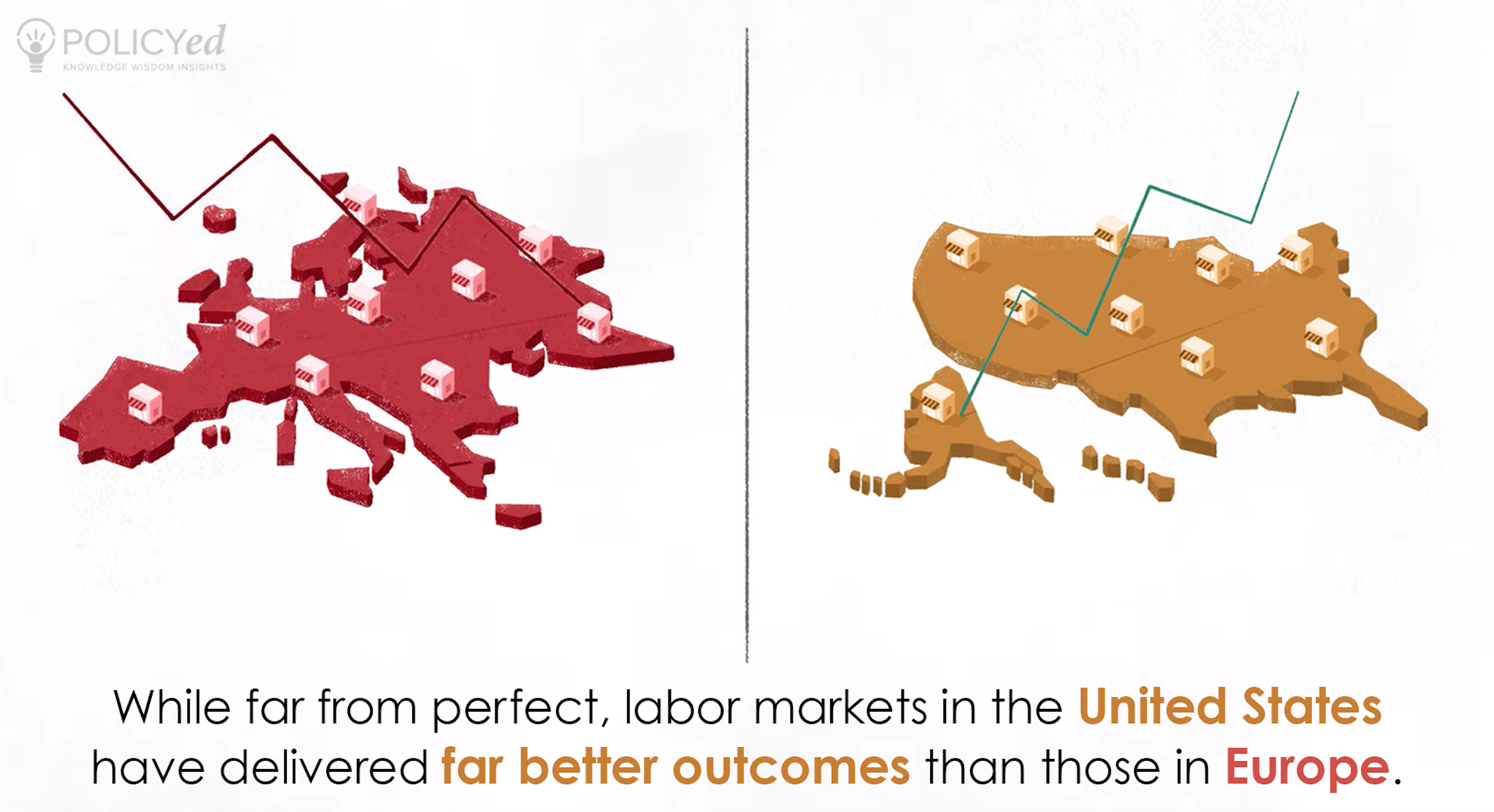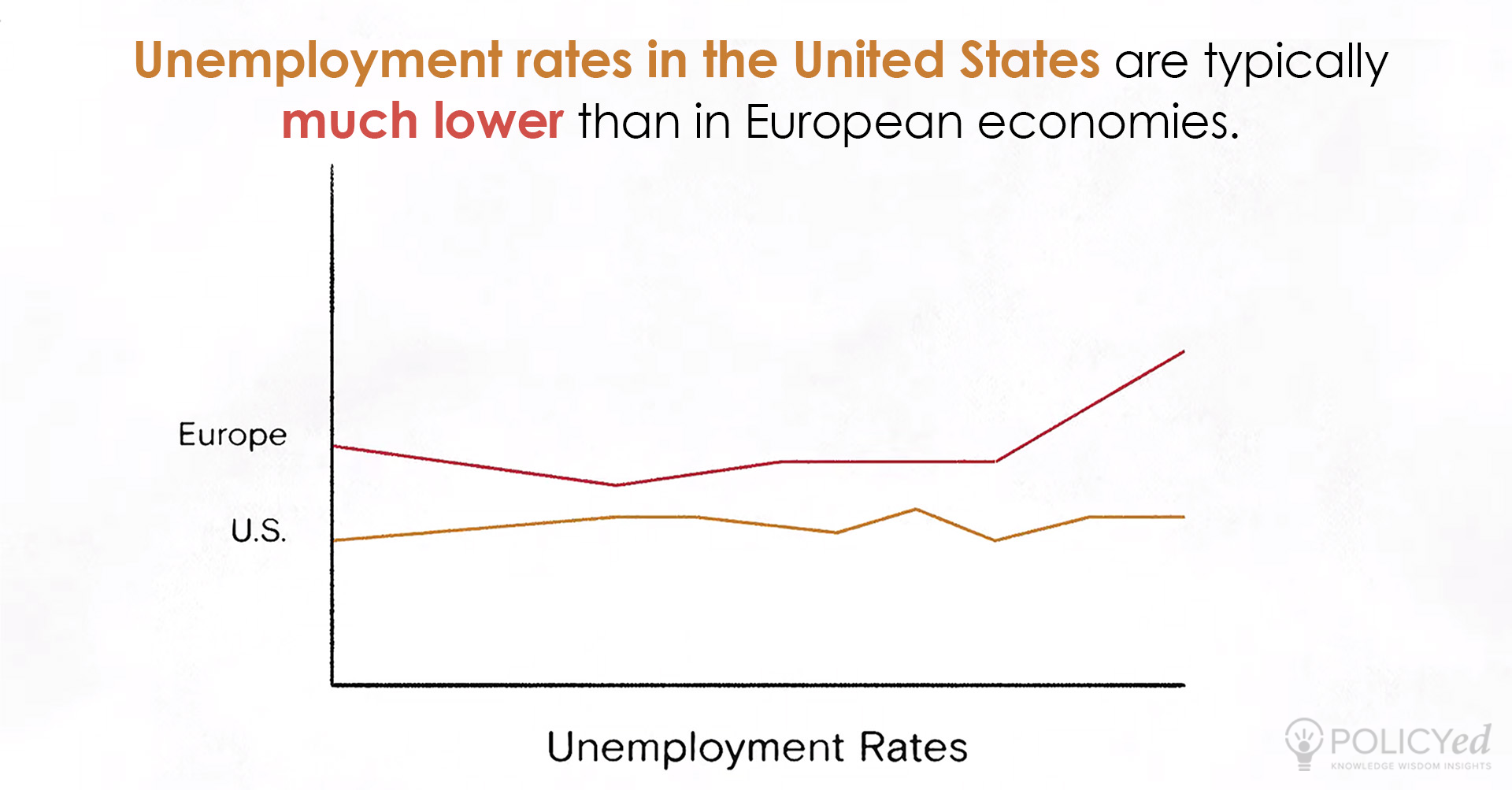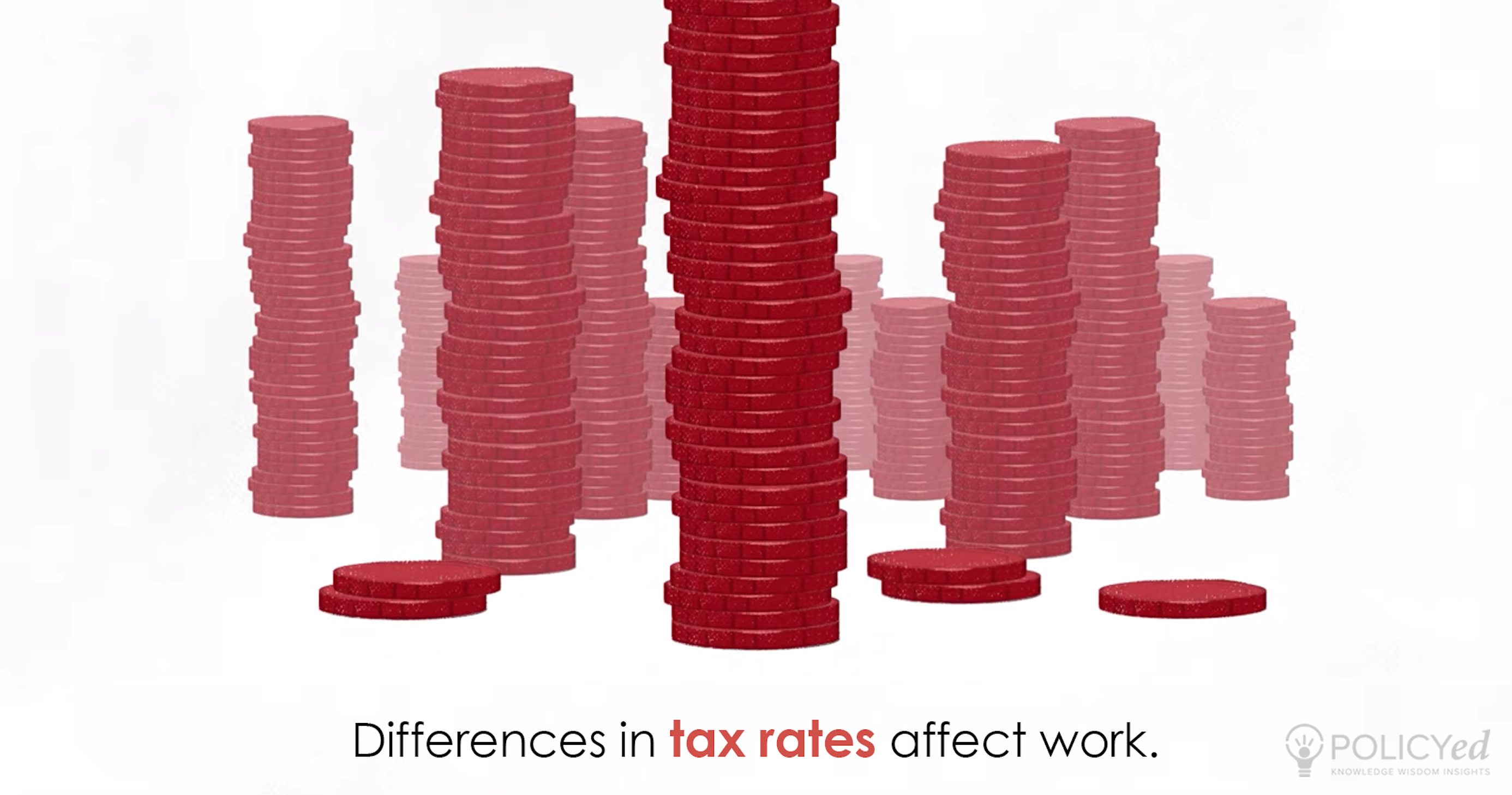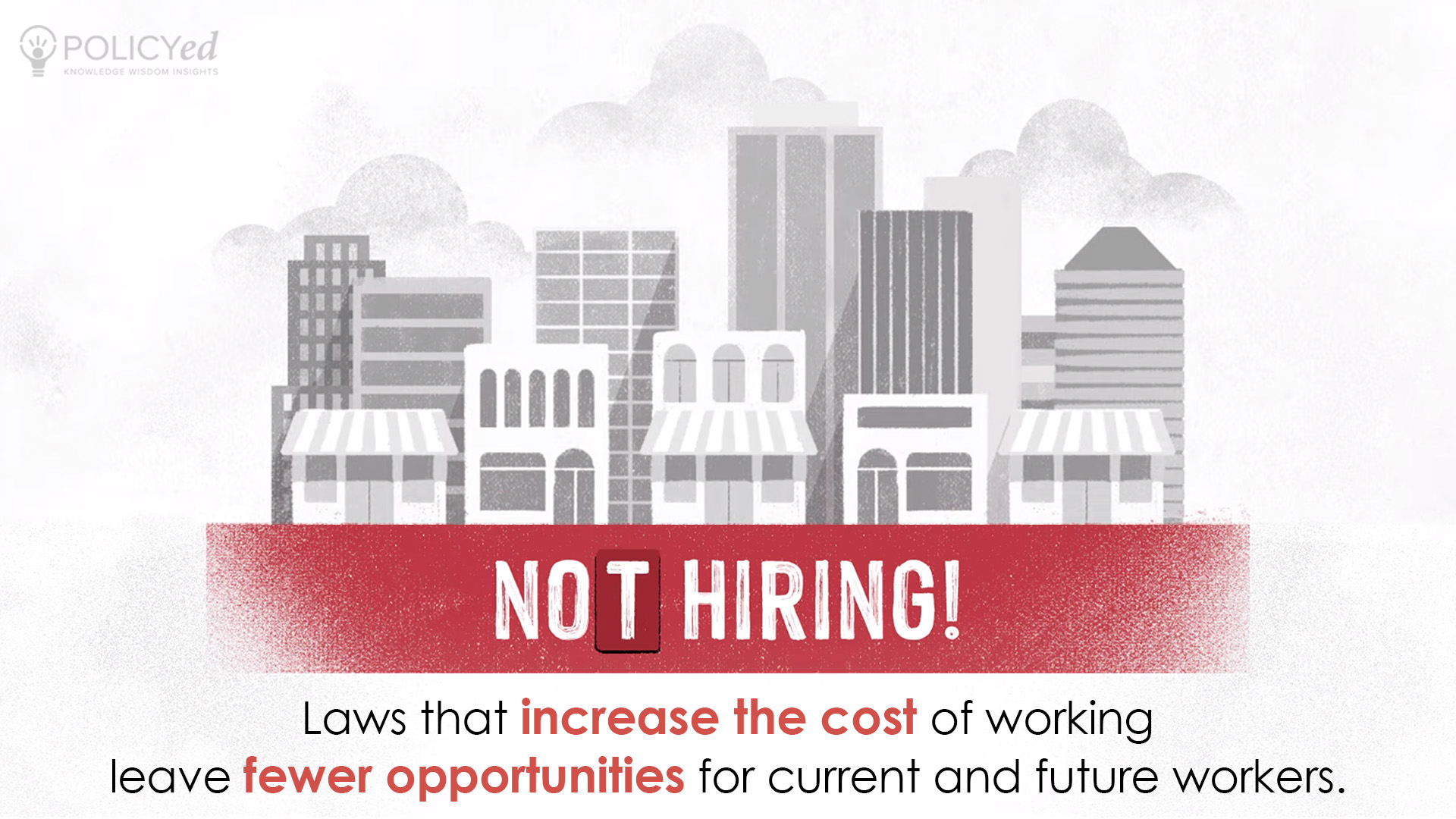Key Takeaways
United States vs European Labor Markets
Imagine an economy where 10 percent of workers are consistently unemployed and jobless rates are even higher among young workers. An economy where employment opportunities are so scarce that many people are permanently dependent on the government, with little hope
for a brighter future. Today, such dismal economies are the norm across much of Europe. While far from perfect, labor markets in the United States have delivered far better outcomes.
Unemployment and Government Policy
Unemployment rates in the United States are typically much lower than those of European economies. The main reason for this difference is government policy. The United States allows labor markets more freedom than does Europe, where countries attempt to dictate labor rules. For example, European labor policies have raised the cost of hiring new workers, while the United States gives employers more flexibility in hiring and firing.
The Effect of Taxes
Tax rates in Europe have increased enormously over the last half century. Because workers receive less value from their work, the average hours worked per adult has been reduced by 31 percent. In contrast, the United States, with its relatively low tax rates, has experienced little change in hours worked over the same time period.
Consequences of Overregulation
Today, many in the United States are proposing new rules and taxes that would make US labor markets look more like Europe’s. They believe these changes will protect workers and raise wages. But laws that increase the cost of working—no matter how well intentioned—will mean fewer opportunities for current and future workers.




